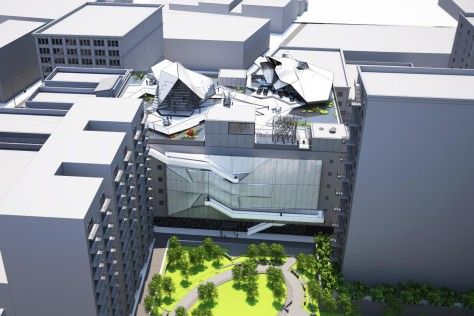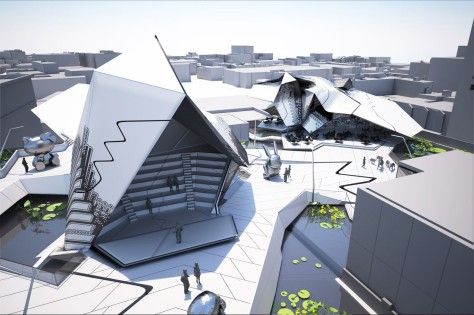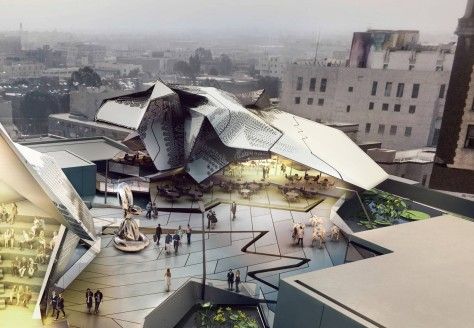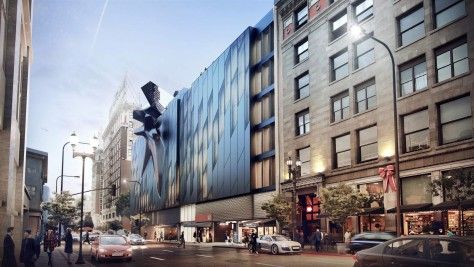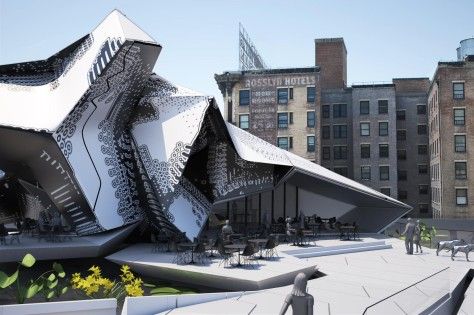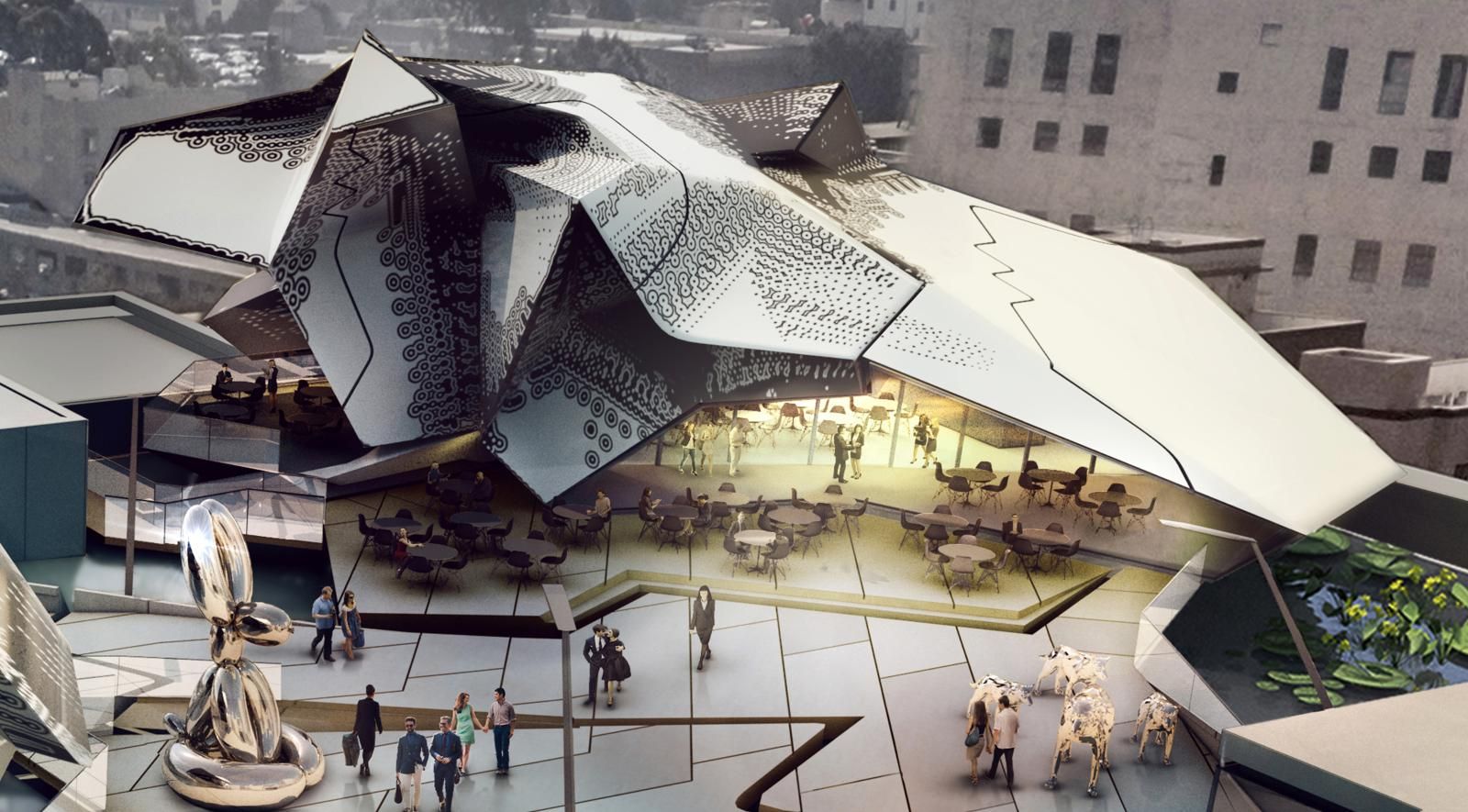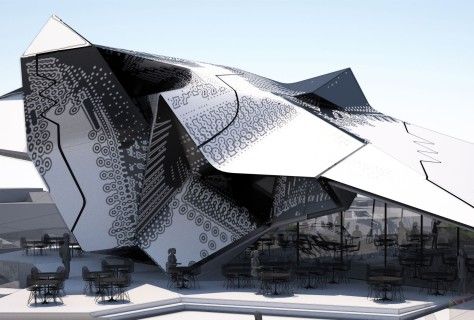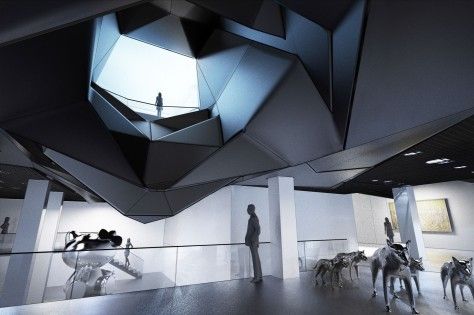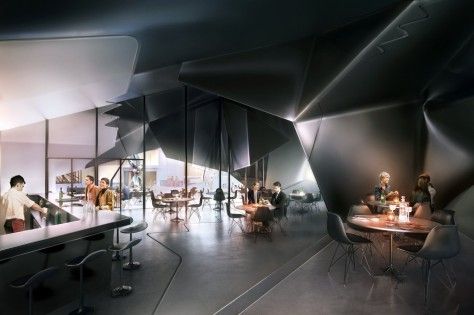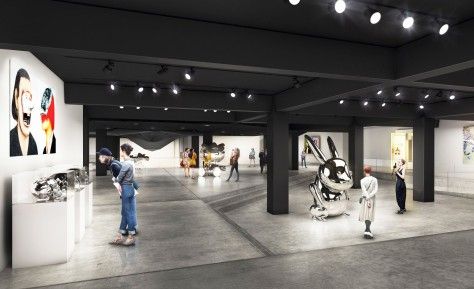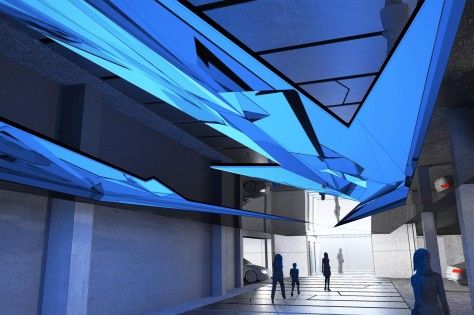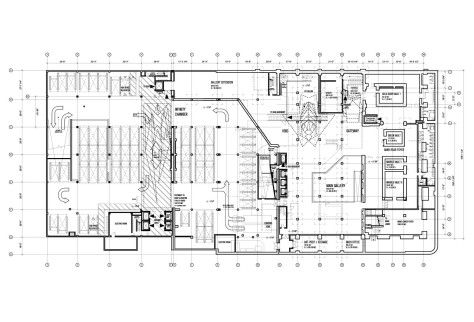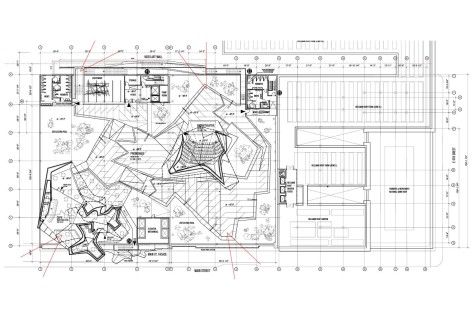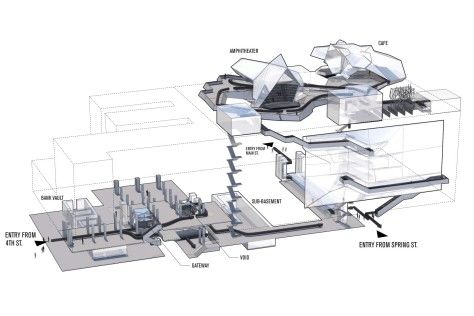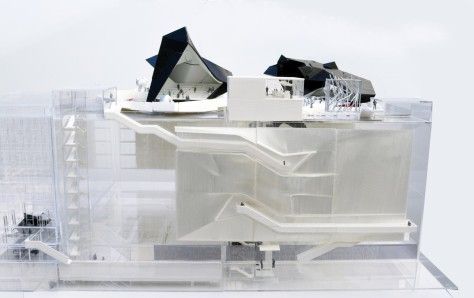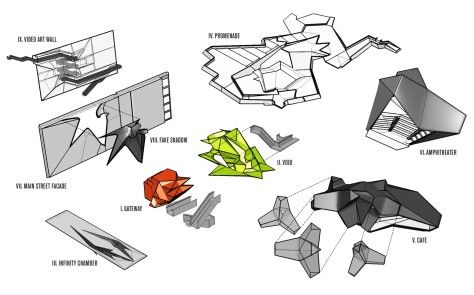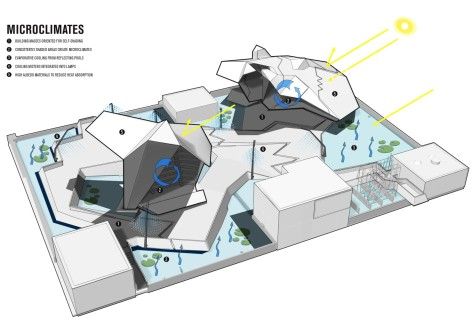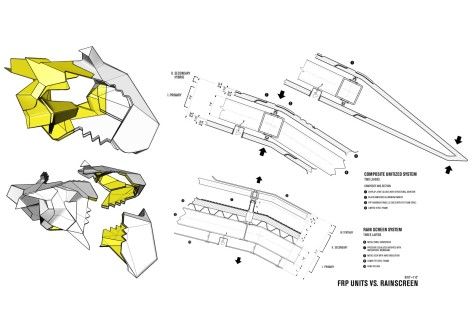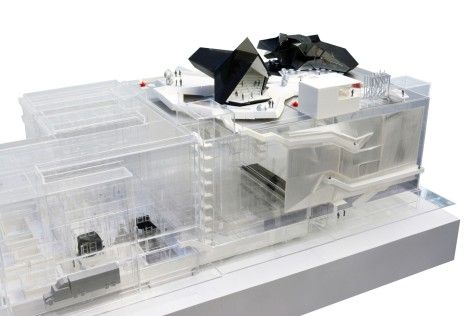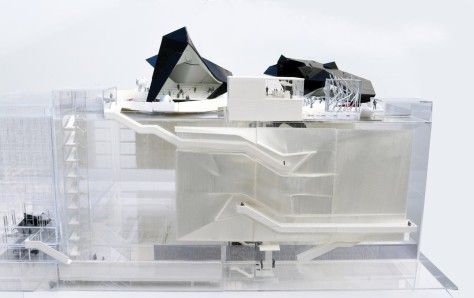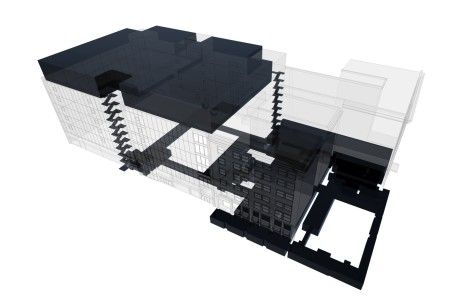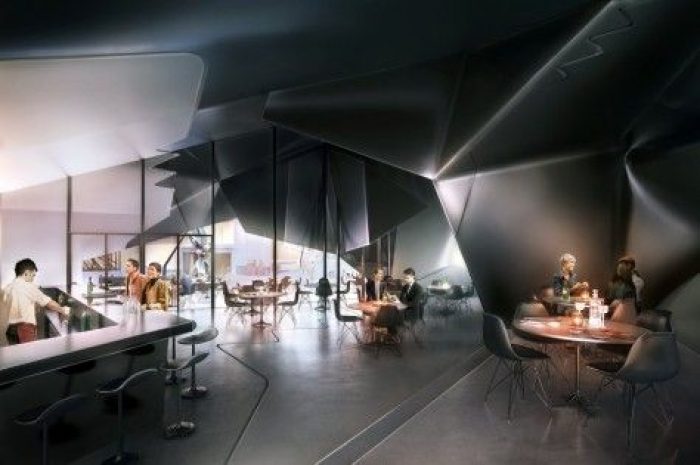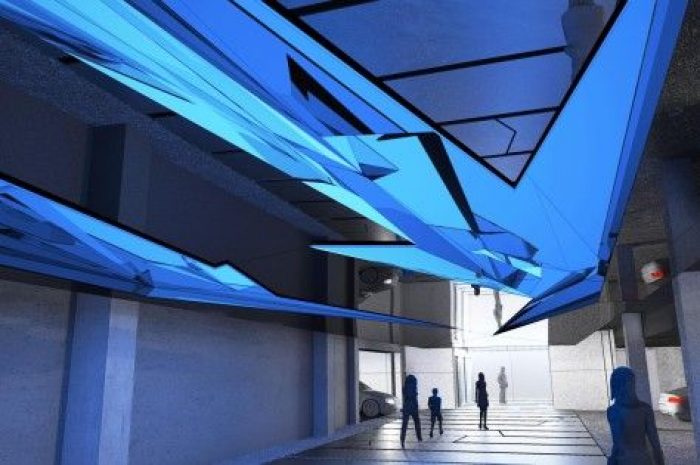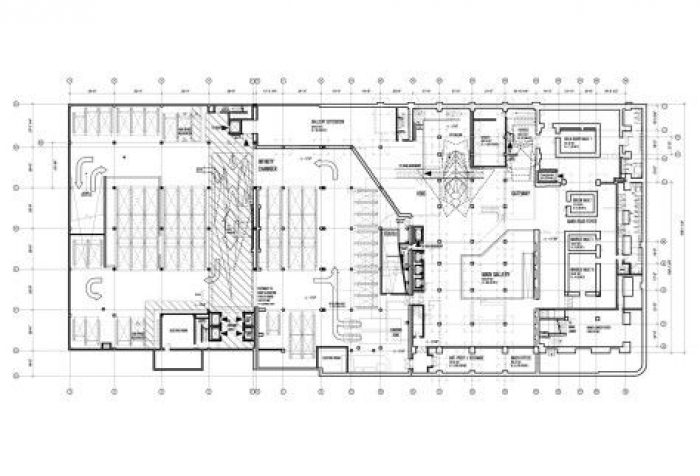Old Bank District Museum
Located underneath, inside of, and on the top of the Farmer’s and Merchant’s bank, Los Angeles, The Old Bank District Museum is set to be built as a new contemporary arts museum by Architect Tom Wiscombe. This museum comes partially as a new addition to the existing building, and partially as an adaptive re-use of the currently available spaces. With its digitized design, it will definitely be an iconic landmark of Los Angeles’s contemporary cityscape.
The museum’s main interest is to emphasize the contrast between the historical and the contemporary. Curved steel additions with digitized patterns cover the whole form. The result is undoubtedly a bold intervention of architecture, although logically attained. The firm explains: “Unlike generalizing forms of coherence we have become familiar with in this late period of digital architecture, such as smoothness and continuity, this project is based on a new, non-literal form of coherence produced by the uniqueness of specific objects and the vicarious relations between them.”
The internal spaces, just as the external additions, form a bizarre-yet logical -mix of shapes and volumes. The result is a representation of the wide range of the currents of contemporary arts, one that covers 80,000 sqft of exhibitions, cafés, and amphitheater. The main exhibition is located beneath the building in basement and sub-basement spaces in the ages-old vaults, emphasizing on creating spaces that are perfectly integrated with the context.
The Old Bank District Museum asserts Wiscombe’s message of creating post-modernist architecture that stands up to its values. The firm describes its approach, evident in this district museum, saying: “Our architecture is based on creating mystery and spatial tension between elements such as building masses, interior spaces, surface articulation, and ground. We refer to this as the architecture of a flat ontology, where architecture is pulled apart into discrete parts so that it can be put back together again in unexpected ways.”
By: Hazem Raad
